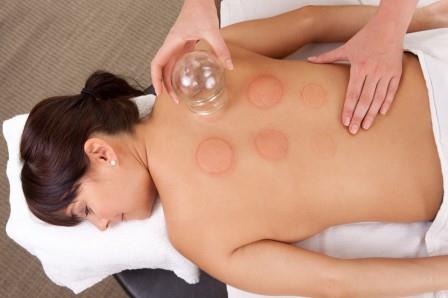
Cupping or What are Those Bruises on Olympian Michael Phelps?
If you watched the Olympics you noticed circular marks that looked like bruises on US swimmer, Michael Phelps. No one beat him with a circular object, those marks are the effect of a Chinese medicine technique known as cupping.
What is cupping and what are the benefits?
Cupping is an ancient technique that improves and restores blood flow. It reduces swelling and pulls waste from body tissues. It allows for fresh, oxygenated blood to flow through tight muscles, stubborn knots, and irritated fascia.
How is cupping done?
For this technique, a flaming cotton ball is placed into a special glass cup. The cup is then quickly placed on the skin. This causes the underlying tissue to be raised partway into the cup. In some cases, such as acute injury, the cups are simply left in place for 15 minutes. For other conditions, such as colds or allergies, they are placed on an area for just a few moments. Then they are moved to another site of stagnation. For more chronic pain the practitioner applies an oil to the skin and then slides the cups over an affected area.
Does cupping hurt?
It does not have to hurt. The amount of suction can easily be adjusted to the tolerance of the individual. In fact, people report that the tightening sensation in the area of the cups often feels very good on tense, aching muscles.
What conditions does this therapy help?
It treats pain in the back, neck, and shoulders, legs (quads, IT band, calves) as well as colds, flu, allergies, asthma, and even cellulite.
Why does Michael Phelps have bruises from cupping therapy?
The technique can cause the skin to turn red, blue or purple if there is a blockage of energy or blood stagnation under the cups. In the case of Michael Phelps, for example, these blockages are due to the strenuous exercise and training he does to prepare for the Olympics.
Is it safe?
Absolutely, if done properly by a well-trained and experienced practitioner.
How long does a cupping treatment take?
A cupping treatment generally takes 30 minutes, including assessment.
How long does it take for the marks to go away?
The skin discoloration lasts anywhere from a few days up to two weeks.
How does cupping help?
Think of this treatment as an inverted deep tissue massage. Instead of pressing down on sore, aching muscles, cupping pulls the skin, fascia, and muscles upward. This movement stretches the tissue, breaks up stagnation and also draws fresh blood to the area. This allows the tissues to soften and relax. It also helps with lymphatic drainage. When white blood cells enter the area to clean up the bruising, they also release compounds that are antioxidant, anti-inflammatory, antiproliferative, and neuromodulatory.
Is there any research to support this therapy?
Yes. In 2018 a systematic review found that it is beneficial for perceptions of pain and disability. It also increases range of motion when compared to untreated control groups.
Want cupping just like Michael Phelps and Prime Minister Justin Trudeau?
Book an appointment with Joy Walraven or by calling 416-481-0222 or book now online.
Authored by Joy Walraven, TCMP, acupuncturist, craniosacral therapist
Research
J Altern Complement Med. 2018 Mar;24(3):208-219. doi: 10.1089/acm.2017.0191. Epub 2017 Nov 29. Effects of Cupping Therapy in Amateur and Professional Athletes: Systematic Review of Randomized Controlled Trials. Bridgett R1, Klose P2, Duffield R3, Mydock S1, Lauche R4.
Complement Ther Clin Pract. 2017 Nov;29:162-168. doi: 10.1016/j.ctcp.2017.09.008. Epub 2017 Sep 14. Cupping therapy: An analysis of the effects of suction on skin and the possible influence on human health.
Lowe DT1.